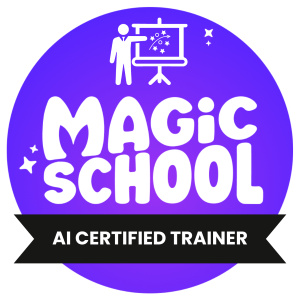Launching into the world of AI in K-12 education raises an important question: where do we begin? How can we introduce AI concepts to teachers in a way that’s both exciting and down-to-earth? Let’s dive into this adventure together, exploring ways to spark inspiration and practicality as we navigate the exciting possibilities of AI in the classroom.
Why AI in Education?
Before we delve into the ‘how,’ let’s briefly address the ‘why.’ AI offers immense potential to revolutionize education by personalizing learning experiences, automating administrative tasks, and providing valuable insights through data analysis. By introducing AI to K-12 classrooms, we can equip our students with essential 21st-century skills and prepare them for the workforce of tomorrow.
Inspiration: Sparking Curiosity
Start by inspiring teachers with real-world examples of AI applications in education. Share success stories from schools or districts that have implemented AI-driven initiatives, such as adaptive learning platforms, intelligent tutoring systems, or AI-powered grading tools. Highlight the transformative impact these technologies have had on student engagement, academic performance, and teacher workload.
Additionally, showcase AI innovations beyond the classroom, from self-driving cars to medical diagnostics, demonstrating the breadth of AI’s influence across various industries. Encourage educators to envision the possibilities of integrating AI across disciplines, fostering interdisciplinary connections and sparking curiosity among students.
Practical Steps: Getting Started
Professional Development
Organize workshops or training sessions led by AI experts or educational consultants specializing in educational technology. These sessions should cover fundamental AI concepts, such as machine learning, neural networks, and natural language processing, in accessible language suitable for educators.
Immersive Experiences
Provide teachers with immersive experiences and hands-on activities and resources to explore AI concepts firsthand! Platforms like Magic School AI allow educators to experiment and gain confidence in using AI technology in their teaching. Magic School AI has a teacher platform and now a recently-released student platform!

Let us assist with your AI integration!
Curriculum Integration
Collaborate with teachers to identify opportunities for integrating AI into existing curriculum units. Encourage cross-disciplinary projects that incorporate AI principles into subjects like mathematics, science, language arts, and social studies. For example, students can use AI to analyze historical data, simulate scientific phenomena, or create AI-generated poetry.
Ethical Discussions
Facilitate discussions around the ethical implications of AI, such as bias in algorithms, privacy concerns, and job displacement. Encourage critical thinking and responsible AI usage among both teachers and students.
Community Building
Foster a supportive community of AI-in-education enthusiasts within your school or district. Create opportunities for teachers to collaborate, share resources, and exchange ideas for implementing AI initiatives. Establishing a network of peer support can empower educators to navigate the challenges and opportunities of AI integration together.
Continued Learning and Adaptation
Finally, emphasize the importance of continuous learning and adaptation in the rapidly evolving field of AI. Encourage teachers to stay informed about the latest developments, attend conferences, participate in online courses, and engage in professional learning communities focused on AI in education.
Conclusion
By inspiring curiosity and providing practical guidance, administrators can empower K-12 teachers to embrace AI as a transformative tool for enhancing learning experiences and preparing students for the future.
Stay curious, stay inspired!

